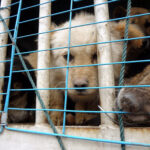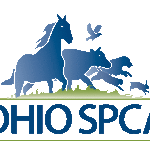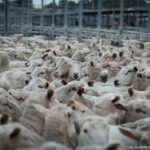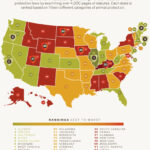Animal cruelty is often viewed as merely an ethical issue, but its ramifications extend far beyond the immediate suffering of individual creatures. The act of preventing cruelty to animals serves multifaceted purposes that resonate throughout society, touching on public health, environmental sustainability, and the very fabric of human ethics. An examination of these interconnected domains underscores the imperative of collective efforts to thwart animal cruelty for the betterment of all.
At the outset, it is crucial to acknowledge that the relationship between humans and animals is symbiotic. This relationship exists especially in communities where domestic animals, such as dogs and cats, contribute not only companionship but also emotional enrichment. Studies indicate that pet ownership can assuage loneliness, alleviate stress, and improve mental health. Conversely, when animals are subjected to cruelty, the psychological effects extend to humans; witnessing or being aware of such violence can foster desensitization to suffering, potentially eroding the moral compass that guides society.
Furthermore, there is an undeniable connection between animal cruelty and public health. Various zoonotic diseases—diseases that can be transmitted from animals to humans—have their roots in the mistreatment of animals. Factory farming, for instance, often leads to crowded conditions where animals are kept in unsanitary environments. These conditions can give rise to outbreaks of diseases like avian influenza or swine flu, which can wreak havoc on human populations. By addressing and preventing animal cruelty, we simultaneously mitigate risks to public health, fostering safer environments for all species.
Moreover, environmental degradation and animal cruelty frequently intersect. Industrial agriculture, notorious for its inhumane treatment of livestock, contributes significantly to habitat destruction, pollution, and climate change. The systematic mistreatment of animals not only results in suffering but also encourages practices that have devastating effects on ecosystems. For example, the clearing of forests for cattle ranching not only displaces countless animal species but also obliterates biodiversity. Sustainable practices that prioritize humane treatment of animals can serve as a crucial pathway toward environmental restoration and conservation.
In a broader societal context, the prevention of animal cruelty has implications for crime reduction. Research indicates that individuals who engage in animal cruelty may also be more likely to commit violence against humans. Studies have shown correlations between animal cruelty and various forms of interpersonal violence, such as domestic abuse. By intervening early and educating communities about the ramifications of such acts, societies can reduce broader patterns of violence, creating a safer world for humans and animals alike.
Additionally, the nurturing of empathy through the humane treatment of animals can catalyze positive changes in human attitudes and behaviors. Cultivating compassion for creatures can enhance social responsibility, encouraging individuals and communities to take a stand against all forms of injustice. This cultivation of empathy not only influences how we treat animals, but also how we engage with one another. A society that values and protects the vulnerable—whether they be animals or marginalized human populations—can foster an atmosphere of collective respect and dignity.
To facilitate these changes, educational initiatives play a pivotal role. Programs designed to teach children and adults about the ethical treatment of animals can instill lasting values and sensitivities. These programs can enrich one’s understanding of the moral implications of cruelty, transforming how future generations relate to all living beings. When individuals learn to respect and care for those weaker than themselves, they build a framework of values that will help uphold the tenets of kindness and justice throughout their lives.
The role of legislation cannot be understated. Enacting and enforcing stringent animal welfare laws create a societal framework that prioritizes the prevention of cruelty. National and local governments are increasingly recognizing the importance of safeguarding animal rights, yet there remains much work to be done. Advocating for stronger penalties against those who engage in animal cruelty can deter prospective offenders, while simultaneously galvanizing public support for humane practices. Legislation can act as both a shield for animals and a barometer of a society’s moral stance.
As the discourse around animal rights continues to evolve, the messaging surrounding the prevention of animal cruelty must also expand. Utilizing various forms of media—be it social networks, documentaries, or public service announcements—can elevate awareness and promote advocacy. Sharing stories of both animal suffering and triumph can serve as a clarion call for individuals to take action. Engaging platforms that humanize these issues fosters solidarity and encourages communal efforts toward tangible change.
In conclusion, the prevention of animal cruelty is an indispensable endeavor that transcends the realm of animal rights. It serves to fortify public health, safeguard our environment, mitigate crime, and nurture empathy within society. Addressing these interconnected issues demands comprehensive strategies involving education, legislation, and advocacy. To recognize the intrinsic worth of all beings is to embody the holistic philosophy that champions justice, compassion, and respect for life in all its forms. By prioritizing the prevention of cruelty to animals, we inevitably pave the way for a brighter and more harmonious future, not just for animals, but for humanity as well.






